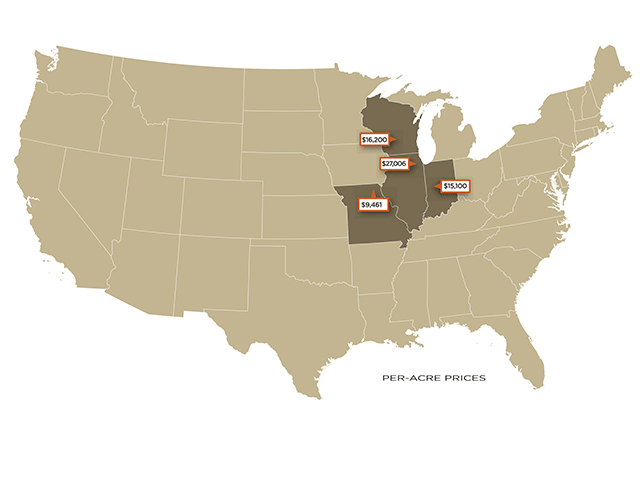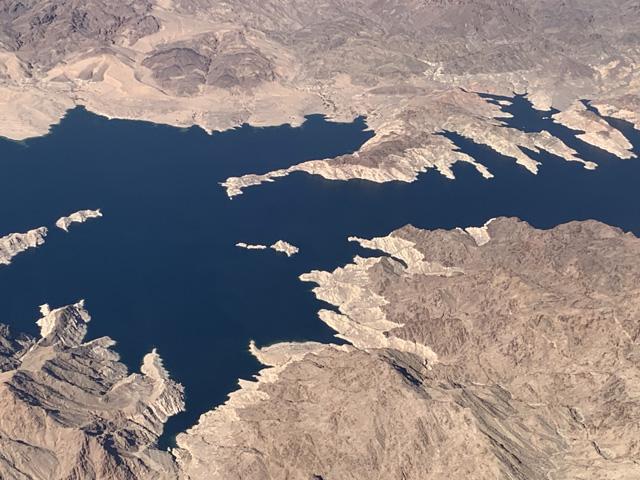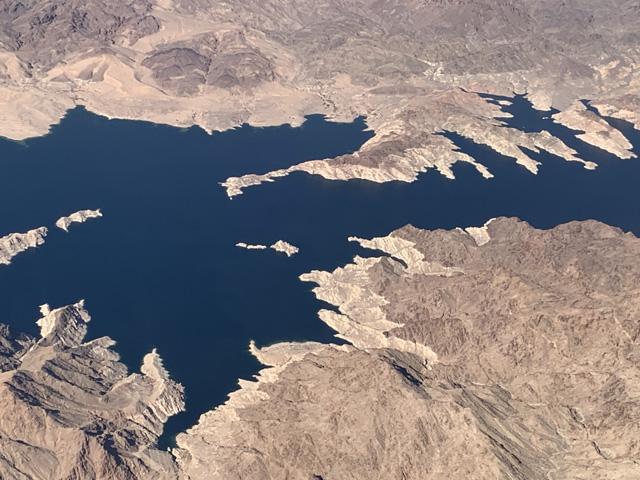Ag Weather Forum
Drought and Demand Keep Shrinking Western U.S. Water Supply
Long-term climate change-enhanced drought in the southwestern U.S. along with limited water use adjustment continues to shrink available water supplies. On the Colorado River, water levels at Lake Mead, formed by the Hoover Dam on the Arizona-Nevada border, and Lake Powell, formed by the Glen Canyon Dam in northern Arizona, have dropped so much that chalky-looking canyon walls show without a doubt that there's not nearly as much water in these two giant reservoirs as there used to be. Added together, more than 2,500 miles of shoreline which used to contain water now bear a harsh bleached-white contrast to the multi-colored rock layers higher up.
Alan Guebert, author of the weekly Farm & Food File, noted in a recent installment that the total capacity of Lake Mead and Lake Powell is 53 million acre-feet of water, which is "an amount that would put all of Kansas under one foot of water." But today, this reservoir pair now holds "…an estimated 13.25 million acre feet of water, or just 25 percent of their capacity."
The bathtub rings have been expanding for almost 40 years; the last time that Lake Mead was full was back in 1983. Now, almost the entire Colorado River Basin is in some phase of dryness or drought, with close to half the basin in either Extreme Drought (D3) or Exceptional Drought (D4) on the U.S. Drought Monitor.
A mid-June U.S. Senate Energy & Natural Resources Committee hearing on short and long-term solutions to extreme drought in the western U.S. brought some pointed comments on the water shortage. Reporting by Jennifer Shutt of the journalism nonprofit States Newsroom cited several facets of the Southwest water shortage which, taken in full, indicate an emergency. Those facets include:
P[L1] D[0x0] M[300x250] OOP[F] ADUNIT[] T[]
Bureau of Reclamation Commissioner Camille Touton stating that states in the Colorado Basin need to cut between 2 million and 4 million acre-feet of water usage in 2023 to protect the Lake Mead and Lake Powell reservoirs. That amounts to almost 25 percent. Touton also testified that "…unprecedented is now the reality and the normal in which Reclamation must manage our systems. A warmer, drier West is what we are seeing today."
The top priority for the Bureau of Reclamation is to manage the Colorado River water flow in the next 60 days so that Lake Mead and Lake Powell stay above "dead pool" status--where the lake levels are so low that they cannot flow past a dam. She also told the hearing that the Bureau of Reclamation will act to make allocation cuts if the states and tribes in the Colorado Basin cannot come up with a plan. "It is in our authority to protect the system. And we will protect the system," Touton said.
Agriculture water usage is likely to get a close look in this effort to maintain the integrity of Lakes Mead and Powell. According to the Southern Nevada Water Authority, 80 percent of the Colorado River's water allocation is devoted to agriculture, and 80 percent of that big piece of the water pie goes toward high-irrigation forage crops such as alfalfa. But an agricultural irrigation support organization, the Family Farm Alliance, is on the record favoring water storage and forest health initiatives rather than decreasing agricultural water allotments.
The forecast for the balance of the summer keeps the drought scenario well in place. Above normal temperatures are forecast for the entire Southwest. Precipitation outlooks place some above-normal amounts into part of the region when the summer monsoon arrives. Otherwise, the forecast calls for near to below normal precipitation amounts out into the fall season.
More details on Alan Guebert's Farm & Food File are available here: https://www.farmandfoodfile.com/…
Jennifer Shutt's full article on the Senate committee drought hearing is available here: https://nebraskaexaminer.com/…
An audio report on the Colorado Basin hearing is available here: https://www.marketplace.org/…
Bryce Anderson can be reached at Bryce.anderson@dtn.com
Follow him on Twitter @BAndersonDTN
(c) Copyright 2022 DTN, LLC. All rights reserved.






Comments
To comment, please Log In or Join our Community .